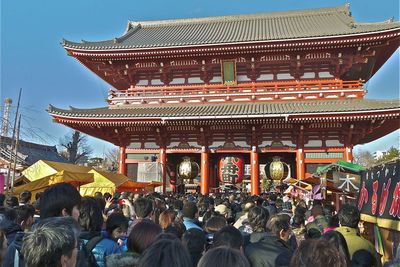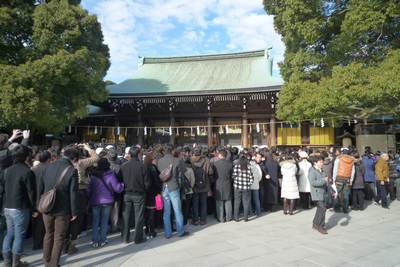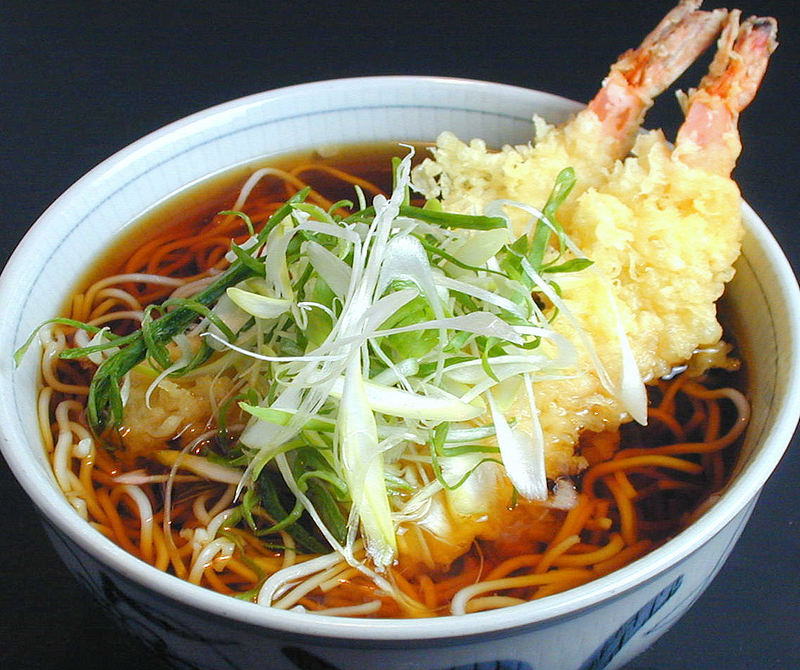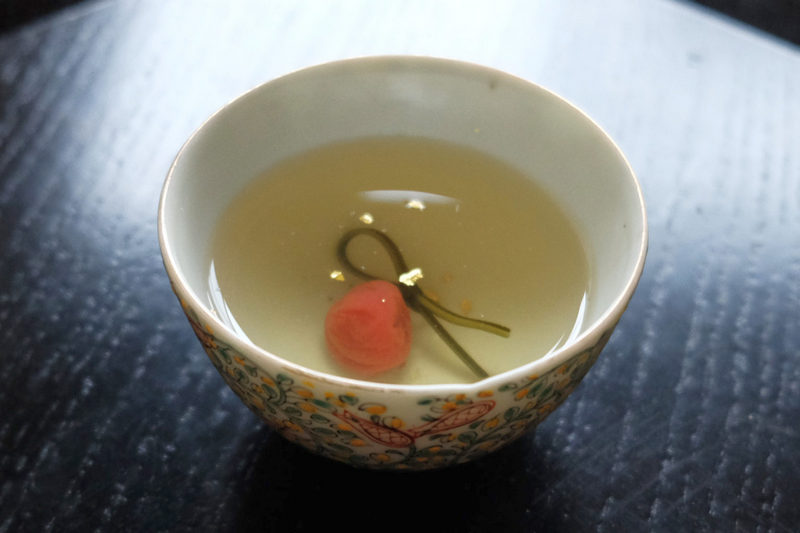New Year's Eve and New Year's Day in Japan
The New Year holiday period, in Japanese oshogatsu (お正月), is the most important and heartfelt holiday of the year in Japan. Until 1873, the country followed the Chinese calendar, but since then it has adopted the Gregorian calendar and therefore celebrates the New Year on January 1.
New Year for the Japanese
The days around the New Year are deeply felt among people, many offices and both public and private places (
including some tourist attractions such as museums or amusement parks) remain closed even up to 5-6 days in the days around New Year's Eve. For the Japanese
the end of the year has a strong symbolic value, as they traditionally consider each year as something in its own right. Therefore, with the end of a year, everything related to that year ends and a "new life" begins. This concept of the Japanese mentality is essential to fully understand the reason for the existence of a whole series of peculiar rituals and symbolisms related to the new year in Japan, which are also reflected in the language. Some widespread customs are the
otoshidama (お年玉), or giving money to children and teenagers, usually until they finish high school, and the
nengajo (年賀状), or sending greeting cards to all friends and relatives. This is today a sort of social obligation that many Japanese families cannot escape. In the days around New Year's, Japan Post hires extra staff to ensure the delivery of all postcards on January 1st.
December 31: New Year's Eve for the Japanese
The Japanese like the idea of starting the new year rested and free of as many burdens as possible related to the year that is about to end. Before December 31, many homes have a so-called end-of-year cleaning (
oosouji, 大掃除). Similarly, on the 31st it is very common to take a nice relaxing and purifying bath. Unlike many other countries, where the last night of the year is seen as an occasion to do something special and grand, the majority of Japanese prefer to stay quiet at home. The evening of New Year's Eve (
omisoka, 大晦日) is usually spent with the family, eating together and watching TV. In particular, there is a very famous show that has been broadcast by the NHK channel since 1951. This is
Kohaku Uta Gassen, an entertainment program that sees various musical groups compete against each other, in theory the most popular of the year that is about to end. After midnight, Buddhist temples ring the bell 108 times, a symbolic event that "drives away" the 108 original sins of the Buddhist religion, and many people go to the temple for the first visit of the year, while others postpone the visit to the next day.
January 1: the first day of the new year for the Japanese
With the new year, many everyday events take on strong symbolic value the first time they occur during the new year. The Japanese language includes many terms that specifically describe the first occurrence of several things during the new year. The most important event is precisely the
hatsumode, 初詣, or the first visit to the temple or shrine. Other events loaded with a strong symbolic meaning are for example the first sunrise (
hatsuhinode, 初日の出), the first dream (
hatsuyume, 初夢), the first smile (
waraizome, 笑い染め).
Hatsumode - visiting the temple
Some people prefer to visit the temple on the same night of the 31st, others the next day, still others in the following days when there are fewer people, more or less within the first two weeks of the new year. The Japanese visit temples on New Year's Eve for a variety of reasons. Primarily it is an age-old tradition and a way to start the new year by doing a sort of "spiritual cleansing" and praying for health, peace and prosperity in the year ahead. Secondly, many people go to respect the popular tradition of buying omikuji, or oracles written on sheets of paper. Finally, visiting temples during the first few days of the year is also an opportunity to spend time with family and friends and to celebrate the start of a new year together.
Omikuji
Buying an omikuji, or oracle written on a sheet of paper, is a very popular tradition in Japanese temples during the first few days of the year. This custom is very ancient and consists in drawing lots for a sheet on which a sort of horoscope of one's life during the new year is written. Omikuji can contain both very lucky predictions and very bad predictions, with several shades in between. After reading the contents, you are allowed to tie the sheet of paper in a special structure of the temple, hoping that this will help to make lucky events happen and, above all, to improve one's fate in the case of unwelcome predictions. The Japanese cherish this ritual of buying omikuji, and temples and shrines make the bulk of the money in the first two weeks of the year.

 crowd of people for hatsumode on January 1 in Tokyo: Asakusa and Meiji Jingu
crowd of people for hatsumode on January 1 in Tokyo: Asakusa and Meiji Jingu
Traditional Japanese New Year foods
There are no particular traditions or customs regarding the dinner on December 31st. Just before midnight, it is customary to eat a plate of
toshikoshi soba (年越し蕎麦), buckwheat noodles in simple broth, sometimes garnished with chopped shallots and tempura. The term toshikoshi in Japanese means "passage from one year to the next". This tradition began during the Edo period (1603-1867) and long soba noodles are a symbol of longevity. In fact, the buckwheat plant can survive adverse weather conditions during its growth period, which is why soba for the Japanese symbolizes the strength and resilience necessary for a long life.
 toshikoshi soba
toshikoshi soba
Japanese New Year's culinary traditions are mostly connected with the first days of the new year. On the morning of January 1, it is traditional to sip a cup of particular green tea (
Ofukucha, 大福茶) with seaweed and a
umeboshi (梅干. pickled plum) inside.
 ofukucha
ofukucha
During New Year's day you can also eat a whole series of foods with symbols linked to good luck in various aspects of life, for example the
kuromame (black soybeans) as symbol of health, the kazunoko (herring roe) as a symbol of fertility, shrimps as a symbol of long life, etc. The typical New Year's dishes are all together called
Osechi-ryori (御節料理) . According to tradition, they should be prepared by each family during the last days of the old year and eaten during the first three days of the new year. In fact, according to an ancient popular tradition, cooking during the first days of the year would not be a good omen. This tradition has been partially lost today. Some families ignore it, others respect it but buy ready-made osechi-ryori from various supermarkets and specialized shops which do a lot of business in the first few days of the year. Furthermore, more and more often osechi-ryori is eaten only on the first day of the year and not on the first three as the ancient tradition would have it.
What to do in Japan on New Year's Eve
Spend New Year's Eve in the Japanese tradition
Quiet dinner and visit the temple at midnight
As the title suggests, you can opt for a quiet dinner wherever you like and around midnight take a walk to the nearest temple or shrine. In
Tokyo, the most popular shrines for the first prayer of the year are
Asakusa and
Meiji-jingu. In
Kyoto, the
Fushimi Inari Taisha. In Osaka, the
Sumiyoshi Taisha. In these places you will find a crowd of locals along with many tourists. Around these places you will probably find some soba restaurants open to eat the typical toshikoshi soba. For a more spiritual and less confusing experience, steer clear of these famous temples and head to a smaller temple or shrine in the neighborhood where you're staying. You can ask the reception of your hotel for specific advice.
As far as dinner is concerned, it is advisable to organize yourself in advance. In small and medium-sized Japanese cities, almost all restaurants will be closed. In Tokyo, Osaka and other large cities, fast food restaurants and many chains generally remain open, especially in more central districts such as Shinjuku and Shibuya. Family-owned restaurants and many restaurants in office areas generally close from December 31 until January 2 or 3. If you want to eat something more sophisticated, the restaurants inside the many hotels are open, but it's best to book in advance.
Spend the night in a ryokan in a spa town
Spending one or more nights in a ryokan in a Japanese spa town is an unforgettable experience, highly recommended for anyone at any time of the year.
The last night of the year is an excellent opportunity to try the ryokan experience. In this way you can spend a relaxing New Year's Eve and you won't have to worry about what to eat for dinner because all ryokan include a fascinating, rich and delicious dinner (often
kaiseki style). If there is a nice shrine around your ryokan where you can go around midnight, even better.
Spend New Year's Eve with the typical countdown
Outdoors
Stages in central squares of cities in the United Kingdom, the United States, Australia, and many other places in the world, with live music and a big countdown at midnight, are not very common in Japan. The only cities where you can easily find something like this are Tokyo and Osaka. In particular, every year some event is organized in Shibuya, near the famous crossing, where many people gather to celebrate with the crowd. Sometimes something similar is also organized under the Tokyo Tower. In Osaka, a big crowd gathers at Dotonbori. However, keep in mind that this is not a typical Japanese custom and that, apart from Tokyo and Osaka, in the rest of the country there is almost nothing of the kind.
In theme parks
Many theme parks in Japan organize special events on New Year's Eve, with shows, a countdown at midnight and the possibility of having fun with the attractions until late at night. There are many options, from the famous Disneyland Resort in Tokyo to Universal Studios in Osaka, but also many other less famous theme parks organize their special events (in Tokyo, for example, the Sega Joypolis in Odaiba, in Yokohama the Cosmo World with a countdown shown on Minato Mirai's Ferris wheel). If you have a favorite theme park in Japan, check out their official website starting early December.
Go dancing at a disco
Clubs are not very common in the rest of the country. However, at least in Tokyo, you do not have this problem. Between Shibuya and Roppongi, you'll be spoiled for choice with New Year's Eve special events at the various nightclubs in the area.
What to do in Japan on New Year's Day
Make the first temple visit of the year - hatsumode
If you have not already been to the temple the night before, or if you want to take the opportunity to visit another temple, you can go to the temple for hatsumode. Visiting temples and shrines in Japan is always interesting, but this time of year is even more so because you can observe very special customs. One of these is the purchase of omikuji, the sheets of paper that serve as a personal horoscope for the coming year. Even foreign tourists can take part in this unique experience. Some temples in very touristy places like Asakusa also sell omikuji in English.
Getting up very early to see the first sunrise of the year - hinomode
If the weather is good, many Japanese like to get up very early on the first day of the year to watch the sunrise for the first time. Any scenic location that faces east is fine, such as hills, mountains, raised parks, or, in large cities, the observation decks on the top floors of skyscrapers. In Tokyo, one of the most popular choices is to climb to the top of Mount Takao. For those who don't want to leave the city, places like the Tokyo Sky Tree and Shibuya Sky have special opening hours in the early morning hours to allow those interested to watch the sunrise. Tickets usually need to be purchased in advance and will soon sell out, it is always advisable to plan ahead.
Guided tours, activities and other things to do
If you are planning a trip to Japan and you want to do something more than just visiting famous places and monuments, we suggest you to use
Rakuten Travel Experiences.
How to use Rakuten Travel Experiences
Rakuten Travel is a very useful website to
enrich your travel experience, especially if you are going solo or it's your first time in Japan.
Because of the language barrier (and more), in Japan it is very difficult to interact with the locals and to get off the tourist track.
Thanks to Rakuten Travel you can find a lot of interesting and sometimes unique
guided tours and activities all over Japan (and not only in Japan), that you would otherwise never be able to enjoy.
But there's more: on Rakuten Travel you can also
buy tickets for several famous attractions, events, transportation and other useful services for tourists. Last but not least, you can
reserve a table in hundreds of restaurants.
Some examples
Take a look at Rakuten Travel Experiences
You may also be interested in